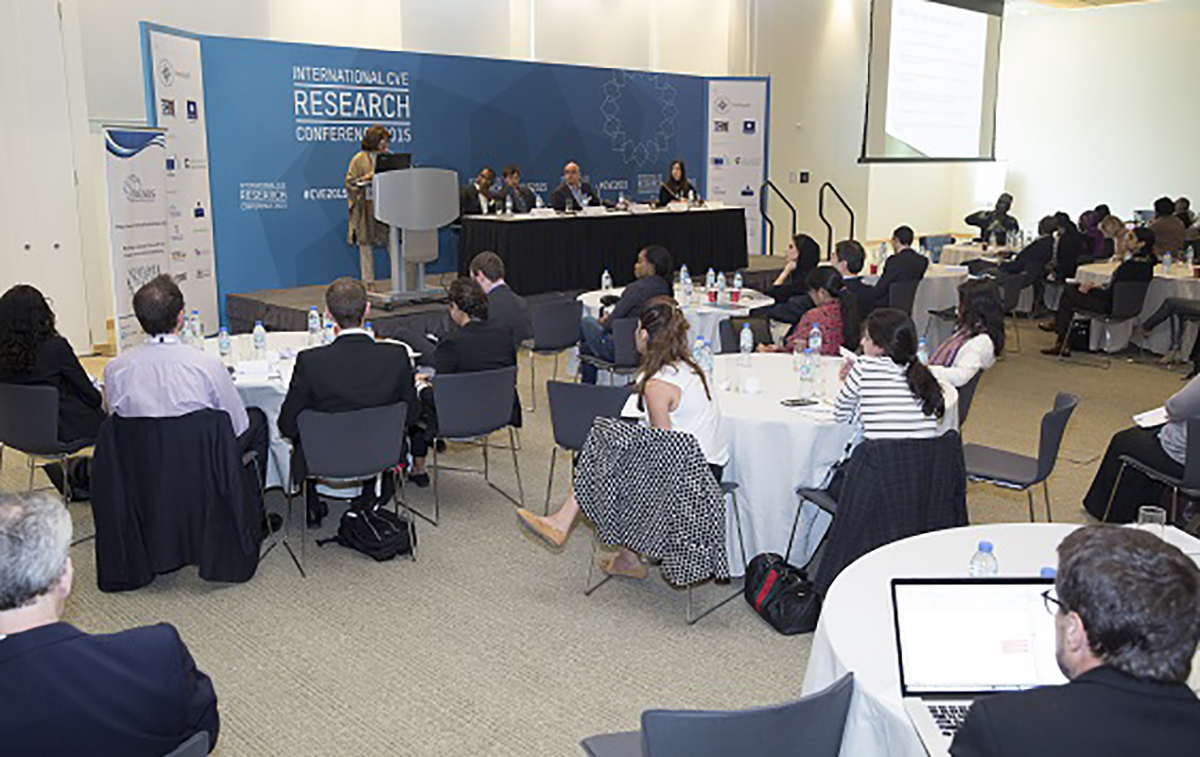Education and development in society are important factors in the limitation of radicalization and recruitment, but there is no evidence to suggest that there is a direct link between illiteracy and extremism. The International CVE Research Conference 2015 organized by Hedayah, offered CVE academics and practitioners a number of preservative measures associated with education. The measures discussed were wide ranging, such as enhancing critical thinking skills; engagement exercises and reviewing educational coursework designed to build multiculturalism, tolerance, and ethics; psychosocial intervention; corrective religious education courses; and the utilization of vocational training programs. Although certainly not neglected within the CVE discourse, the event demonstrated further emphasis must be placed on the relationship between education and countering violent extremism.
Given the necessity to improve gaps in research regarding education and CVE, of crucial importance, yet diluted, is the need to emphasize the contextualization between education and CVE to allow for country and cultural conditions to be effectively addressed. In many parts of the world, education is viewed as a means for socializing, suggestive of societal and country-specific traditions and values. Such societal values have the ability to build endurance against violent extremism and should be undertaken and further developed. The importance of context can be seen in Nigeria, for example, where radicalized youth who are less educated join Boko Haram, while those who are more ideologically driven and middle class are recruited by ISIS. Therefore, CVE practices should be tailored in accordance with what end of the education spectrum one finds themselves on. Additionally, preventing violent extremism and CVE programs must take into consideration local drivers and values so as to minimize the risk of seeming too intrusive and ultimately counterproductive.
The role ideology plays in radicalization and recruitment within an educational setting, especially theological ideology, is over-theorized both in academic and policy research, which appears to neglect further possible push and pull factors that could be interrelated to education. There are ample examples where educated individuals have gone on to commit violent acts. At the same time, one’s religious intensity cannot provide cause for concern. Therefore, access to accurate and substantive qualitative and quantitative data on how ones access to education may potentially increase or decrease their chances of being radicalized and recruited in varying local contexts must be produced.
Further research must be conducted on the variety of curricula and pedagogy styles that have the most influence or affect radicalization and recruitment into violent extremism. For example, in some cases, students with stronger theological education foundations find it easier to resist the lure of extremism. However, researchers and policy-makers alike lack the empirical evidence to suggest how assimilating Islamic schools, for instance, into wider education systems differs between contexts and what the impact of such measures or teaching techniques may be. Information-based education does not seem to suffice as youth are trained to provide aid workers and CVE practitioners with the response they want to hear and then given the opportunity they flee again to join violent extremist groups. Therefore, of tantamount importance is transformational education, where one is conditioned to develop an autonomous sense of thinking and meaning free from conventional principles, judgments, ethics, and approaches, received from one’s culture, background, faith, and family views. Finally, the role of extracurricular activities within an educational setting must be further explored as such reinforcement of traditional learning content like participation in sports, the advancement of cultural initiatives, and stirring civic bonds, could prove to be more effective on youth than methods taught in formal classroom settings.
The legitimacy of the research, messenger, and message are crucial. Assessments must be contextualized to allow for distinctions that arise in varying religious, ethnic, and social settings. Future research on CVE and education should be based on local contexts to make a real difference and eliminate gaps surrounding methodology in techniques used and choices made by researchers. The UK’s PREVENT program had largely been criticized as being an unsuccessful model, and previous to its 2011 review, it had the effect of constructing an entire Muslim community as being at-risk and suspect. Evaluations, such as those conducted on the PREVENT program are integral, as they provide awareness and vital empirical content. In this respect, funding for the gathering and analysis of data must be sustained and improved. There needs to be a recognition in the fact that tools of change do not rest with the government but with the community and civil society at large. This is due, in part, to the fact that excessive government involvement in CVE practices raises questions regarding the legitimacy of the message and the messenger. The part that victims’ voices play along with the stories of former disillusioned extremists will prove critical in education about CVE. A youth flirting with the notion of extremism and violence will in all likelihood disregard the social media campaigns of the government he perceives as the enemy. Such an example can be found in the U.S. government’s Twitter campaign effort by the name of “Think again, Turn away” which was mocked online and nicknamed “Think again, Run away.” Instead, legitimate voices such as peers who have experienced the same feelings, have joined and have become disillusioned can serve as powerful deterrents with a greater impact. Case studies, such as that of Northern Ireland, where former IRA members use their story as a component of school curricula to dissuade students from joining radical groups, have proven reasonably effective.
The role of the private sector in CVE expands upon an additional necessity: to connect the research with policy. Assuming that policymakers require data and research, one way to bridge this divide between research and policy is to bring all stakeholders (government, law enforcement, entrepreneurs, community leaders, researchers, and teachers) together. By bringing together these parties, who may not necessarily be used to talking to one another, trust and ultimately action are brought about. CVE, therefore seizes being merely a government to government concern, but rather becomes a whole of society approach whereby all stakeholders come together to tackle violent extremism.
Definitions matter – the framework of prevention, the promotion of education of peace, and mitigating violent extremism, is preferred as a means of reducing extremism over the more reactionary term of CVE, with its implied militaristic solution. Perhaps crucially, a clear cut definition as to what exactly CVE entails would avoid conflicting programs and counterproductive measures, as those posited by the U.S. government in its confused strategy to counter violent extremism. Definitions also matter when analyzing the manner in which youth are defined within the CVE framework. CVE measures ought to shift the focus and blame away from youth and instead make them feel part of the solution. Imagine being a youth in Afghanistan, Iraq, Nigeria, Pakistan, or Syria and having Western forces occupy your town, asserting that they will counter violent extremism, and blaming you in the process as being part of the problem, not the answer. The message that resonates among many of these youth at risk of being radicalized is that the world is burdened by them and that they are the obstacle. Instead, youth must feel inspired and empowered to act against violent extremism. Such positive recognition and strength will ultimately produce CVE knowledge on the ground in more effective ways.
Additionally, governments must ensure that NGO’s are afforded a central role in the development and implementation of PVE strategies. Such peace-building organizations have ample experience working with at-risk communities and having conversations of substance with civil society. On the part of government administrations, laws that prohibit organizations from reaching at-risk communities must be reformed and funding specifically designated for prevention must be allotted, not just for the military or for CVE.
Furthermore, any future PVE and CVE programs must be shaped by meticulous analysis, not repetitious examinations and assumptions regarding the drivers of radicalization and instability. Efforts must target vulnerable youth, not just the privileged few who live in cities, are easy to reach, and speak English. Finally, if the volume of youth who are radicalized and have the potential of becoming terrorists is to be reduced, rather than opting for more focused CVE-centered approaches, where energies are made surgically to intercede with individuals who are already on the radicalization path, research and policy must place weight on essential PVE efforts with regards to education. Both Denmark and the U.K. gleaned from their initial experiences with CVE and have adopted the view that governments should give up a direct confrontation with extremists in a conflict of ideas because civil society is far more equipped to undertake such a task. Australia learnt from the British PREVENT program as well as its own unsuccessful 2010 “Living Safe Together” initiative before it launched its “Building Community Resilience” CVE efforts in 2014, aimed at constructing and fostering resilience at the community level, in the form of youth mentoring, personalized intervention plans, intercultural and interfaith school curriculum, and online support.








